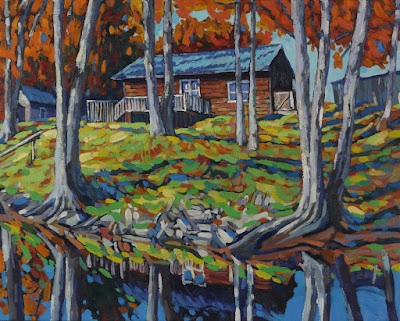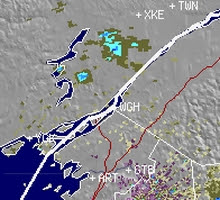 |
| #2735 "Lily Pads Pondering" 36x12 by 1.5 inches |
Thoreau needed to concentrate more on his writing. Apparently, Ellery Channing told Thoreau in March 1845: "Go out upon that, build yourself a hut, and there begin the grand process of devouring yourself alive. I see no other alternative, no other hope for you." Just months later on July 4, 1845, Thoreau started his two-year, simple living experiment in a small house he had built on land owned by Emerson in a second-growth forest along the shores of Walden Pond. The house was in "a pretty pasture and woodlot" of 14 acres. Paradise does not need to be large.
I built a garden shed in the summer of 2022 with some help from the Grand Kids. I had considered building a "Tom Thomson Shack" as well but that might not happen and time waits for no one. I have gotten used to "glamping" in the Singleton Sanctuary Studio surrounded by my tools and art. Life is very good.
I thought that I could string out a series of these pads I witnessed in the eastern bay of Singleton Lake. I used lots of oil on this unusual, gallery-mount canvas. The Singleton Sanctuary Studio was quite jammed pack with curing canvases.It was still very much winter outside so I enjoyed my time in Singleton Sanctuary Studio in front of the Pacific Energy wood stove.
For this and much more art, click on Pixels.
Warmest regards and keep your paddle in the water,
Phil Chadwick







































